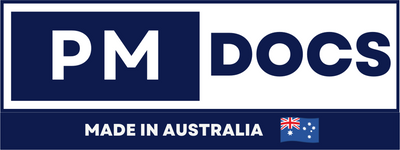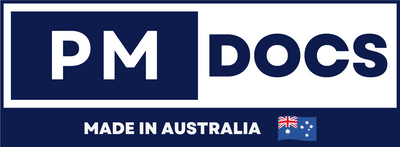AI Governance Framework Toolkit Overview Australia
Introduction
In today's rapidly evolving technological landscape, artificial intelligence (AI) plays a pivotal role in various sectors. As AI systems become more integral to our daily lives, ensuring their ethical and responsible use is paramount. This is where an AI governance framework comes into play, particularly in a forward-thinking nation like Australia. AI ethics revolves around the moral and ethical implications of AI systems. It addresses questions like: How should AI be used? What are the potential risks? How can we ensure AI operates fairly and transparently? These questions form the backbone of AI governance, a set of policies and practices designed to guide the ethical and responsible deployment of AI technologies.

Why Is AI Governance Important?
AI governance is crucial for several reasons. First, it helps mitigate risks associated with AI, such as privacy violations and biased decision-making. Second, it fosters trust among users and stakeholders by ensuring transparency and accountability. Lastly, it promotes innovation by providing clear guidelines and standards, encouraging developers to create AI solutions that are both effective and ethical.
The Australian Context
Australia has been proactive in establishing an AI governance framework that aligns with global standards while addressing the unique challenges and opportunities within the country.
1. The AI Ethics Framework
A2. ustralia's AI ethics framework is designed to guide organizations in the development and deployment of AI systems. It emphasizes principles such as fairness, transparency, accountability, and privacy. These principles ensure that AI technologies are used in ways that respect human rights and promote social good.
2. The AI Governance Framework Toolkit
The AI Governance Framework Toolkit in Australia provides a comprehensive set of tools and resources to help organizations implement AI governance effectively. This toolkit includes guidelines, checklists, and best practices that cover various aspects of AI governance, from data management to stakeholder engagement.
Key Components Of The Toolkit
-
Guidelines for Ethical AI Use: These guidelines outline the ethical considerations organizations should take into account when developing and deploying AI systems. They address issues such as bias, transparency, and data privacy, providing a roadmap for ethical AI use.
-
Risk Assessment Tools: The toolkit includes tools for assessing the risks associated with AI systems. These tools help organizations identify potential risks and develop strategies to mitigate them, ensuring the safe and responsible use of AI technologies.
-
Stakeholder Engagement Resources: Effective AI governance requires input from various stakeholders, including developers, users, and policymakers. The toolkit provides resources to facilitate stakeholder engagement, ensuring that diverse perspectives are considered in AI governance.
-
Training and Education Materials: To ensure that AI governance is implemented effectively, organizations must have access to training and education materials. The toolkit includes resources to help organizations educate their employees about AI ethics and governance, fostering a culture of ethical AI use.
Implementing The AI Governance Framework
Implementing an AI governance framework requires a strategic approach. Here are some steps organizations can take to implement the framework effectively:
Step 1: Assess Current Practices
Organizations should begin by assessing their current AI practices. This involves evaluating existing policies, procedures, and technologies to identify areas for improvement. By understanding their current practices, organizations can develop a roadmap for implementing the AI governance framework.
Step 2: Develop a Governance Strategy
Once organizations have assessed their current practices, they can develop a governance strategy that aligns with the AI ethics framework. This strategy should outline the organization's goals and objectives for AI governance, as well as the steps they will take to achieve them.
Step 3: Implement Policies and Procedures
With a governance strategy in place, organizations can begin implementing policies and procedures that align with the AI governance framework. This includes developing guidelines for ethical AI use, establishing risk assessment processes, and creating channels for stakeholder engagement.
Step 4: Monitor and Evaluate
Effective AI governance requires ongoing monitoring and evaluation. Organizations should regularly review their AI practices to ensure they align with the governance framework. This involves assessing the effectiveness of policies and procedures, identifying areas for improvement, and making necessary adjustments.
The Role Of Government And Industry
In Australia, both the government and industry play crucial roles in advancing AI governance. The government provides the regulatory framework and resources necessary for effective AI governance, while industry stakeholders drive innovation and implementation.
1. Government Initiatives
The Australian government has launched several initiatives to support AI governance, including funding for research and development, partnerships with industry stakeholders, and the establishment of regulatory bodies to oversee AI technologies.
2. Industry Collaboration
Industry collaboration is essential for effective AI governance. By working together, industry stakeholders can share best practices, develop standards, and drive innovation in AI technologies. This collaboration ensures that AI governance is implemented consistently and effectively across different sectors.
Conclusion
AI governance is essential for ensuring the ethical and responsible use of AI technologies. In Australia, the AI Governance Framework Toolkit provides organizations with the resources they need to implement effective AI governance. By following the guidelines and best practices outlined in the toolkit, organizations can foster trust, mitigate risks, and drive innovation in AI technologies.
As AI continues to evolve, the importance of robust governance frameworks will only grow. By staying proactive and committed to ethical AI use, Australia can lead the way in responsible AI development and deployment.




